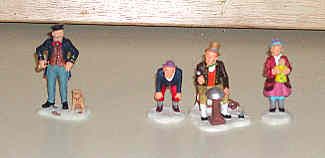
The Victorian-era sailor is an individual figure - the tinker and children is a set.

Checker players are a set. Figures would be appropriate from 1915 to the present.
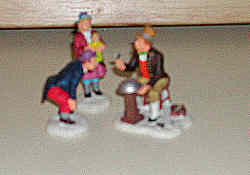
Posed as packaged, the set is attractive. The tinker explains his work to the children.
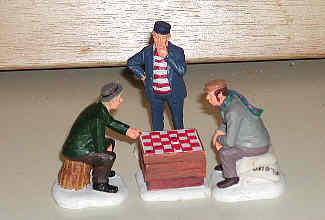
Here, two men play checkers while a third looks on, interested.
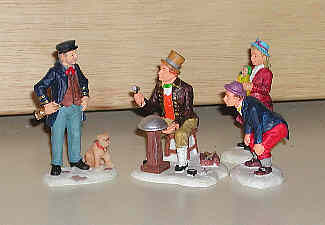
Adding the sailor changes the scene. The tinker talks with the sailor ,while children look on from the side.
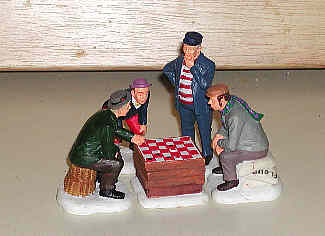
The scene changes - but how do we manage to incorporate a boy in Victorian garb into this later era? The most distinguishing Victorian features of his clothes are the coat tails and footwear. By concealing them from view, the boy looks right at home in this scene. Occasionally, a figure from one era can work in another if you conceal those elements of the "wrong" era for the scene.
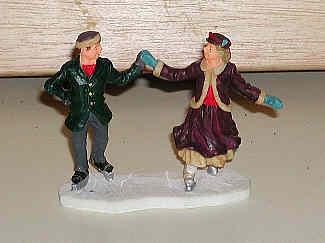
These skaters can be Victorian or circa 1920 - 1947. The clothing is indistinct enough to allow it to fit.

None of these figures are a set, as sold. However, the five workmen on the right are placed so as to make a set. They fit together well as a group hauling supplies. I find them particularly useful for freight platforms on train stations. To the left is a peanut vendor with his cart - these two can add color to a scene. They are a set, in themselves. Far left is a figure you may have seen - an old tin cowboy. He is like the type seen in early movies. Not part of any scene, he happened to be in place when the picture was taken.
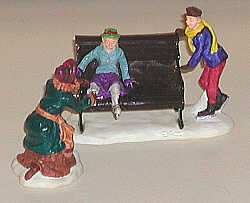
Another good scene - a mother ties on skates for her child.
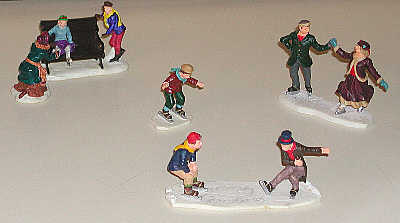
Combining both the preceding scenes with other figures gives us a more complex vignette. It is a larger scenario, built of several smaller ones.